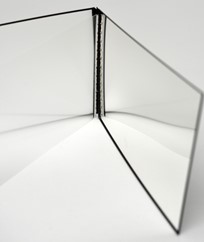-
- Nov 25
-
Macalegin Electronics

- 0
How do LCD Screen Backlights work?
Backlights are the part of an LCD screen that is meant to illuminate an area behind the LCD. This technology has been around for quite a while and is considered “old” as far as the electronics industry is concerned, but this doesn’t mean that it is no longer useful. Millions of brand-new devices still utilize this technology today.

Types of Backlights
There are two types of LED backlight technologies that are the most prevalent today.
The LED-Diffused Backlight and the LED-Matrix Backlight. You have probably heard of the LED-Matrix Backlight referred to as QLED technology, or Selective lighting technology. There are a few technologies that combine these features but to keep things simple, here are the two main concepts.
LED-Diffused Backlight
 This type of backlight will generally have only a single row of LED’s for smaller screens, but at the most, only LED’s on the edges of a screen.
This type of backlight will generally have only a single row of LED’s for smaller screens, but at the most, only LED’s on the edges of a screen.
This is generally the cheapest and thinnest way to manufacture an LCD display for smartphones.These backlights consist of a highly reflective (mirror-like) backing, followed by a fiber optic style sheet of plastic which the LED lights are directed into. On top of this you then have a combination of layers consisting of diffusers and reflective polarizers. The combination of these layers allows for a fairly uniform distribution of light throughout the backlight.
While this is effective, it can have downsides such as decreasing the contrast ratio of the display or a somewhat uneven light distribution. This type of backlight will also make liquid damage very apparent.
LED-Matrix Backlight
This type of backlight uses an array of LED lights to illuminate only a small section of the screen. QLED displays can have an LED for each pixel of the LCD. By utilizing this technology, you can overcome the issues of decreased contrast ratios experienced with a diffused style backlight. The downside to this is that it is generally more power-hungry and makes the backlight far more expensive to manufacture than its counterpart.
Prognosis
It is likely that these technologies will continue to be utilized and improved for years to come. As we continue to find improvements we will be able to prevent issues that are now common with LED’s such as slowly dimming or changing color over time. Bottom line is that this technology won’t likely be leaving our electronic devices anytime soon.

